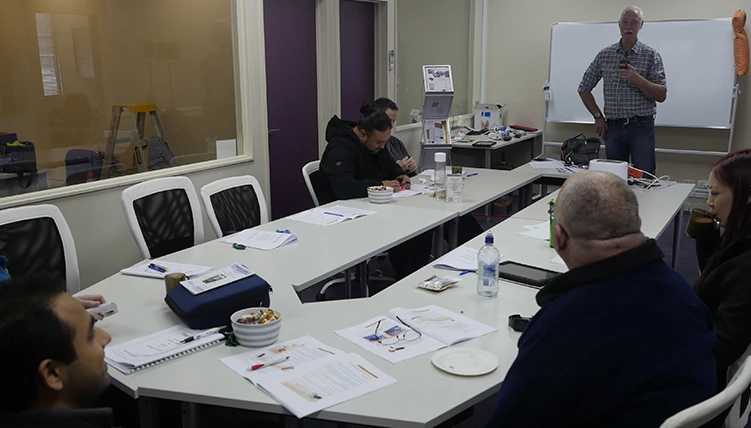
Have you heard the good news yet?
New Zealand’s No. 1 Test and Tag training and equipment supplier are pleased to announce that once again we will be training in more locations around New Zealand.
Our goal has always been to provide effective and efficient training and equipment to ensure electrical safety. Our customers’ needs are our No. 1 priority.
To celebrate the start of the New Year, we are giving away a place on one of our AS/NZS 3760 test and tag training courses of your choice scheduled to be held in New Zealand!

You’ve read that right! If you have always wanted to attend one of our training courses, now’s your chance to join for free – and you also get to choose where to attend.
Training Locations
 Currently, Metrotest serves the following locations across New Zealand:
Currently, Metrotest serves the following locations across New Zealand:
• Hamilton
• Rotorua
• New Plymouth
• Napier/Hastings
• Blenheim
• Greymouth
• Invercargill
• Queenstown
• Auckland Airport
• Wellington
• Dunedin
• Auckland North
• Tauranga
• Gisborne
• Palmerston North
• Nelson
• Christchurch
How to go in the draw
There are only three simple steps to win:
1. Like Metrotest on Facebook.
2. Like this post and comment where you would like to attend the training course.
3. Comment where you would like to attend the training course.
It’s that simple. Then all you have to do is wait and keep your fingers crossed!
Who can join?
Anyone who is interested can join the contest. Whether you need a refresher or you want to start your own test and tag business, this is your golden opportunity.
Here’s a disclaimer: Flights, transfers or accommodation are not included in the prize. But if you live near any of our training locations, then those things will be the least of your worries.
Or if you don’t mind flying over a distance, then you’re welcome to join! We guarantee a quality training that will be worth your while. Modesty aside, Metrotest is a highly sought after test and tag training provider with a huge number of repeat business. Our training courses are always updated according to the AS/NZS 3760 Standards.
For more information about testing and tagging, here are some of the frequently asked questions (FAQs) and their answers:
Who can test and tag?
Basically, anyone who is deemed competent can do it. And to become competent, you have to successfully complete a test and tag training course from a legit and reputable training provider. After completing the training and assessment, you will receive a certification that allows you to carry out testing and tagging immediately.
That’s right. You won’t need electrical qualifications or electrical registration at all. But you do need the right equipment, which is a portable appliance tester (PAT), to do testing and tagging.
Why test and tag?
Electrical devices can be found in any office or workplace. Yet it’s no secret that any device that runs on electricity is potentially dangerous. If minimising the dangers or risks is part of your responsibility, then you need to test and tag on schedule.
The Electrical (Safety) Regulations 2010 require all electrical equipment and fittings used in the workplace, or offered for hire or lease, to be safe for use. While it’s not mandatory, testing and tagging electrical equipment is an effective way to check their safety.
In case you’re wondering, there is an alternative to testing. Some electricians use residual current devices or RCDs to check for earth leakage. However, this is not an acceptable method for construction or demolition sites, and the testing device itself will need to be tested and tagged.
What types of equipment does this apply to?
Pretty much anything that is plugged into an electrical connection or wired into the building, from small portable devices to large industrial machinery. This applies to both single- and three-phase connections.
Additionally, you can test and tag the following:
• New equipment before use
• Second-hand appliances offered for sale
• Appliances that have had repairs or services
• Medical equipment (in accordance to AS/NZS 3551:2004 Technical management programs for medical devices)
Items that are hard wired or fixed in place don’t need to be tested.
How often is testing and tagging done?
The Standards set out recommended time frames for different types of equipment in different work environments. This is based on the fact that the environment affects the rate of wear and tear or potential damage to the equipment. For instance, machines used in a ‘hostile environment’ such as construction sites, must be tested and tagged once every three months. On the other hand, office equipment and protected appliances need testing once every 1 or 5 years.
Testing and tagging is a growing business in New Zealand. And now’s the best time to learn the skill and the secrets of the trade.
Join our contest today for a chance to train with Metrotest! This may just be the career or business opportunity you are wishing for this New Year!









